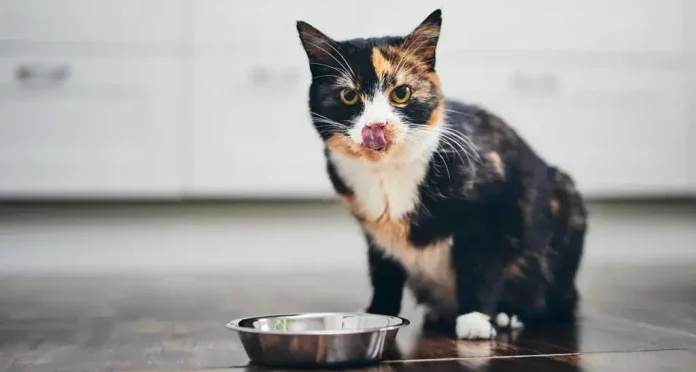Cats continue intriguing and puzzling their owners, especially regarding novel foods like green beans. As cat caregivers expand homemade diets, questions arise. Are green beans safe or healthy for cats? This article comprehensively examines green beans in the feline diet. While beans offer some nutritional merits, cats’ unique biology warrants caution and moderation. By better understanding cats’ dietary needs, owners can make informed decisions when navigating these vegetable additions.
The Feline Diet
To determine if unconventional foods like green beans benefit cats, understanding feline nutrition fundamentals is key. Cats are obligate carnivores, meaning they thrive on meat-based diets.

Cats require ample protein from animal sources to meet daily demands. Chicken, beef, fish and organ meats provide essential amino acids. Fats, vitamins A and B also come from meats. Compared to dogs and people, cats have limited ability to digest plant carbohydrates and fiber. Somecooked starchy vegetables may be tolerated in small amounts if balanced with sufficient animal protein. Overall, cats lack evolutionary adaptations to derive adequate nutrition from foods like green beans.
Green Beans: Nutritional Profile
Green beans belong to the legume family and provide a low-calorie source of vitamins, minerals and fiber for humans. When cooked, green beans contain Vitamin A, Thiamine, Riboflavin and trace minerals. They also provide insoluble fiber that benefits digestion. However, the plant nutrients in green beans hold limited relevance for meeting cats’ dietary requirements. The indigestible fiber could tax some cats’ digestive systems. Owners must weigh the assets and constraints of green beans’ composition for feline diets.
Can Cats Eat Green Beans?
The verdict on green beans remains quite polarizing. On the pro side, some veterinarians contend that minimal portions may be beneficial. Proponents suggest the plant fiber in cooked green beans could supplement digestion, much like grass consumed by wild felines. The low calories may also aid weight management. However, many experts staunchly advise against beans. Potential risks include indigestion, nutrient malabsorption, and allergies from unfamiliar proteins. There are also superior options like pumpkin for fiber. Overall, green beans appear best avoided, though small amounts may be tolerated by some cats if introduced gradually.
Preparing Green Beans for Cats
If incorporating green beans, proper preparation is crucial. Cook canned or frozen green beans until very soft, then puree the beans and liquid into a digestible mash. Cooking softens the fibrous cellulose. Alternatively, quickly steam fresh green beans to retain nutrients but soften texture. Whether cooked or raw, beans must be diced into tiny pieces to reduce choking risk. Keep servings small, about 1-2 teaspoons of bean mash blended into food. Proper preparation enhances digestibility and safety.
Introducing Green Beans to Your Cat
Cats require slow transitions to new foods. Introduce green beans gradually in case of allergies or digestion issues.
First, mix a few minuscule pieces the size of a pea into your cat’s normal food. Observe over 24 hours for normal appetite and litter box habits.
If tolerated, slightly increase serving size every 4-5 days while monitoring reactions. Never replace traditional cat food entirely with beans.
Discontinue beans immediately if any concerning symptoms develop like vomiting or diarrhea. Patience and vigilance allows cats to adjust to additions like green beans.

Popular Green Bean Recipes for Cats
Some cat owners create homemade recipes using green beans and cat-approved ingredients:
- Green Bean Chicken Bake: Diced chicken, mashed green beans, broth and cat supplements baked into bite-size morsels.
- Tuna Bean Mix: Flaked tuna, pureed green beans, turmeric and broth for flavor.
- Vegan Green Bean Cakes: Mash beans with chickpea flour and nutritional yeast then form into tiny savory cakes.
When formulating homemade cat foods with green beans, consult veterinary guidelines to ensure nutritional adequacy and balance. Green beans should not comprise the bulk of feline diets.
Signs of Allergic Reactions
Some cats may experience allergic reactions from novel proteins in green beans. Symptoms include vomiting, diarrhea, itchy skin, rashes, watery eyes and wheezing. If any concerning symptoms develop, stop feeding green beans and contact your veterinarian immediately. Antihistamines or steroids may be prescribed. Veterinary guidance supports navigating any food-related allergies.
Monitoring Your Cat’s Health
When introducing any new food, routinely monitor your cat’s weight, energy levels, water intake, coat condition, litterbox habits and sociability. Notice any shifts from their normal baseline after integrating green beans. Routine veterinary wellness checks allow professionals to assess diet changes and recommend adjustments if necessary. Being attuned to subtle signals helps ensure your cat’s nutritional needs are fully met.
Success Stories
Many cat owners report safely integrating modest amounts of mashed green beans into feline diets. Some notice improved digestion and weight maintenance. The key factors are proper preparation, gradual introduction, and finding balance with traditional cat foods. While green beans appeal for benefits like fiber, they should not overwhelm balanced meat-based nutrition suited for obligate carnivores. Some finicky cats also reject greens beans entirely. Understanding individual preferences prevents overeager incorporation.
Conclusion
In summary, existing evidence indicates green beans provide limited benefits and some risks to cats if given irresponsibly. Tiny amounts may be stomached by some cats, but improper size or frequency can create dangerous choking hazards and nutritional imbalance. While beans appeal for their vitamin and mineral content, cats require concentrated nutrition from quality meat-based diets to thrive. Continual research on cat nutrition helps us make ever more informed dietary decisions benefiting cats. With due diligence and veterinary guidance, owners can judiciously navigate novel additions like green beans. But a cat’s wellbeing must always come first.


is cialis safe
is cialis safe